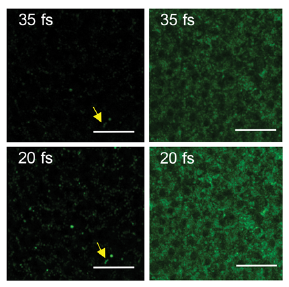Two-photon imaging of the mammalian retina with ultrafast pulsing laser
JCI insight 2018 | 3(17)
Grazyna Palczewska, Patrycjusz Stremplewski, Susie Suh, Nathan Alexander, David Salom, Zhiqian Dong, Daniel Ruminski, Elliot H Choi, Avery E Sears, Timothy S Kern, Maciej Wojtkowski, Krzysztof Palczewski
Abstract:
Noninvasive imaging of visual system components in vivo is critical for understanding the causal mechanisms of retinal diseases and for developing therapies for their treatment. However, ultraviolet light needed to excite endogenous fluorophores that participate in metabolic processes of the retina is highly attenuated by the anterior segment of the human eye. In contrast, 2-photon excitation fluorescence imaging with pulsed infrared light overcomes this obstacle. Reducing retinal exposure to laser radiation remains a major barrier in advancing this technology to studies in humans. To increase fluorescence intensity and reduce the requisite laser power, we modulated ultrashort laser pulses with high-order dispersion compensation and applied sensorless adaptive optics and custom image recovery software and observed an over 300% increase in fluorescence of endogenous retinal fluorophores when laser pulses were shortened from 75 fs to 20 fs. No functional or structural changes to the retina were detected after exposure to 2-photon excitation imaging light with 20-fs pulses. Moreover, wide bandwidth associated with short pulses enables excitation of multiple fluorophores with different absorption spectra and thus can provide information about their relative changes and intracellular distribution. These data constitute a substantial advancement for safe 2-photon fluorescence imaging of the human eye.



